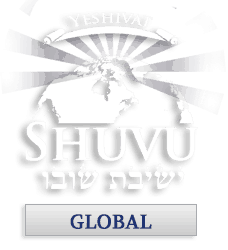מִכֹּ֣ל | הַבְּהֵמָ֣ה הַטְּהוֹרָ֗ה תִּקַּח־לְךָ֛ שִׁבְעָ֥ה שִׁבְעָ֖ה אִ֣ישׁ וְאִשְׁתּ֑וֹ וּמִן־הַבְּהֵמָ֡ה אֲ֠שֶׁ֠ר לֹ֣א טְהֹרָ֥ה הִ֛וא שְׁנַ֖יִם אִ֥ישׁ וְאִשְׁתּֽוֹ: גַּ֣ם מֵע֧וֹף הַשָּׁמַ֛יִם שִׁבְעָ֥ה שִׁבְעָ֖ה זָכָ֣ר וּנְקֵבָ֑ה לְחַיּ֥וֹת זֶ֖רַע עַל־פְּנֵ֥י כָל־הָאָֽרֶץ:
Of all the clean animals you shall take for yourself seven pairs, a male and its mate, and of the animals that are not clean, two, a male and its mate. Also, of the fowl of the heavens, seven pairs, male and female, to keep seed alive on the face of the earth.
Genesis 7:2-3
As in much of Genesis, this parsha contains a story most everyone is familiar with. The story of Noah and the flood. As the story goes, Hashem has told Noah that the earth is going to be destroyed and Noah leads the animals, two by two, in pairs, into the Ark. But we see in chapter seven that this is not exactly how the story goes.
Noah does not save one pair of every animal from destruction. Rather, he saves one pair of unclean animals and seven pairs of clean animals. This begs the question; how does Noah know which animals are clean and which are unclean? Nowhere in the Torah, so far, is there any instruction given to anyone about clean and unclean animals. So how does Noah know?
Simply asking this question leads to several fascinating conclusions. First, there was a differentiation between clean and unclean animals from the beginning. Second, what, precisely, does clean and unclean mean, especially since mankind was not yet eating meat? Third, Noah clearly understands the difference between clean and unclean animals, how?
The third question is the most problematic. Clearly, no one is given instruction as to which animals are clean and which are unclean. This instruction does not appear in the Torah, but, there is no other method that can account for Noah’s knowledge of clean and unclean.
The implication here is stunning. There are instructions given that do not actually appear in the Torah. The written Torah, that is, the written instruction, does not contain all instructions given by Hashem. Or, at least, the written Torah does not contain specifics regarding all of Hashem’s instruction. This means there is an Oral Law, or oral instructions that are given by Hashem. Noah received oral instruction, that is, Oral Torah, from Hashem. Throughout the rest of Scripture, we see oral instruction given by Hashem and passed orally by individuals and then by Israel. Consequently, there can be no doubt that truly understanding Scripture includes understanding these oral instructions given by Hashem and passed on by Israel. Noah followed Hashem’s Oral Law, as did Yeshua. We should also. Shabbat shalom.
